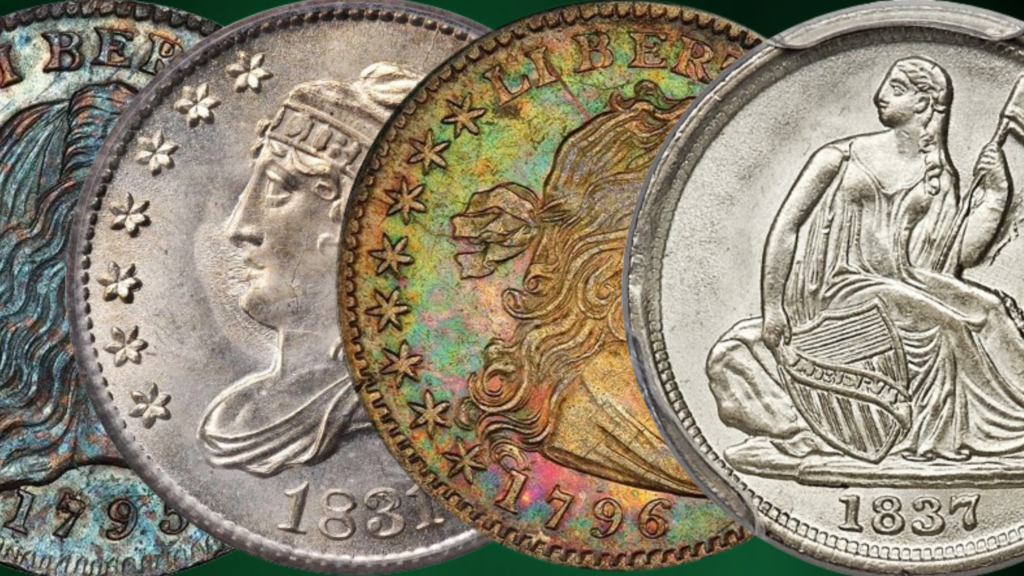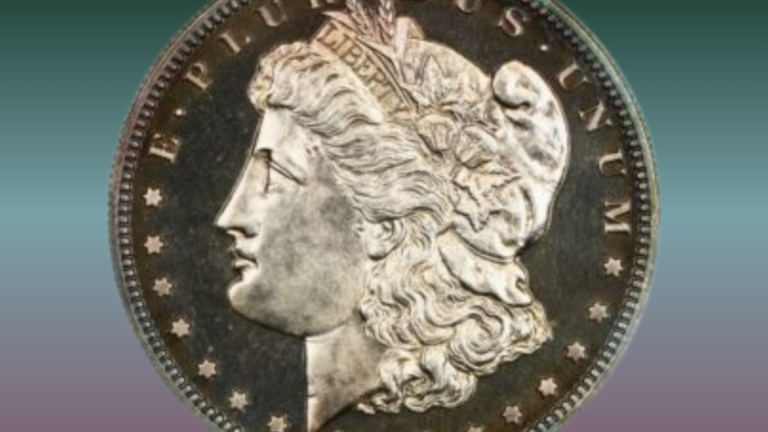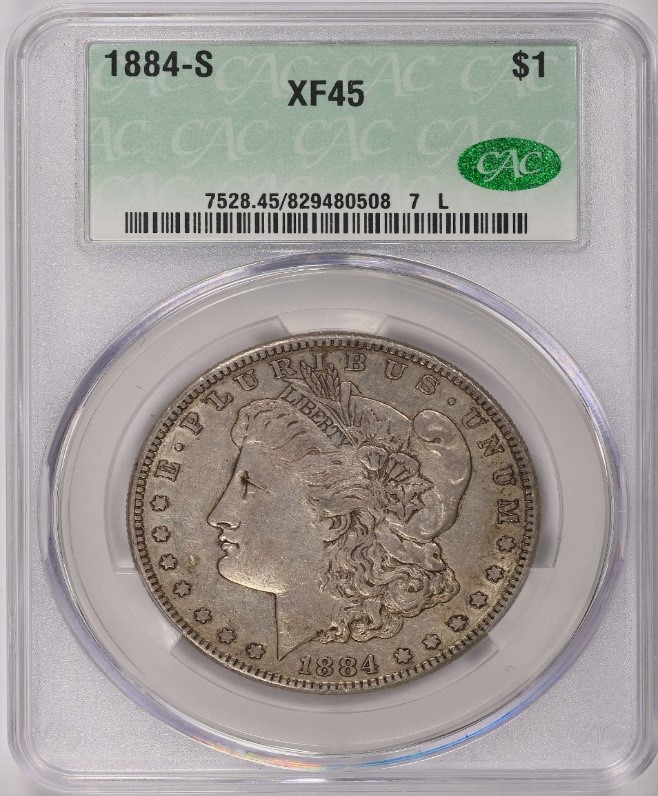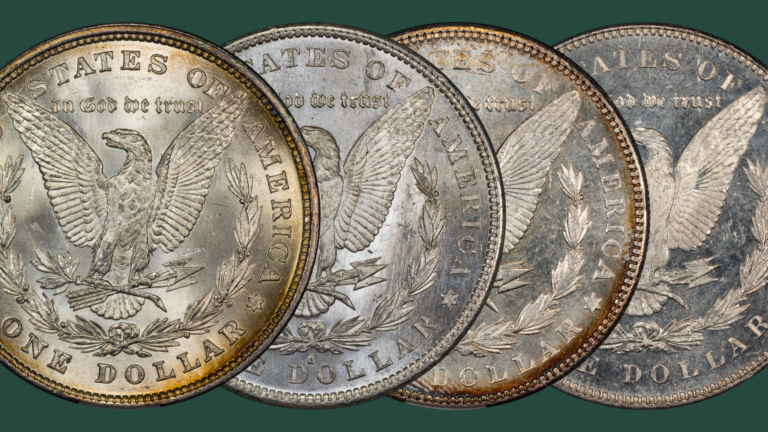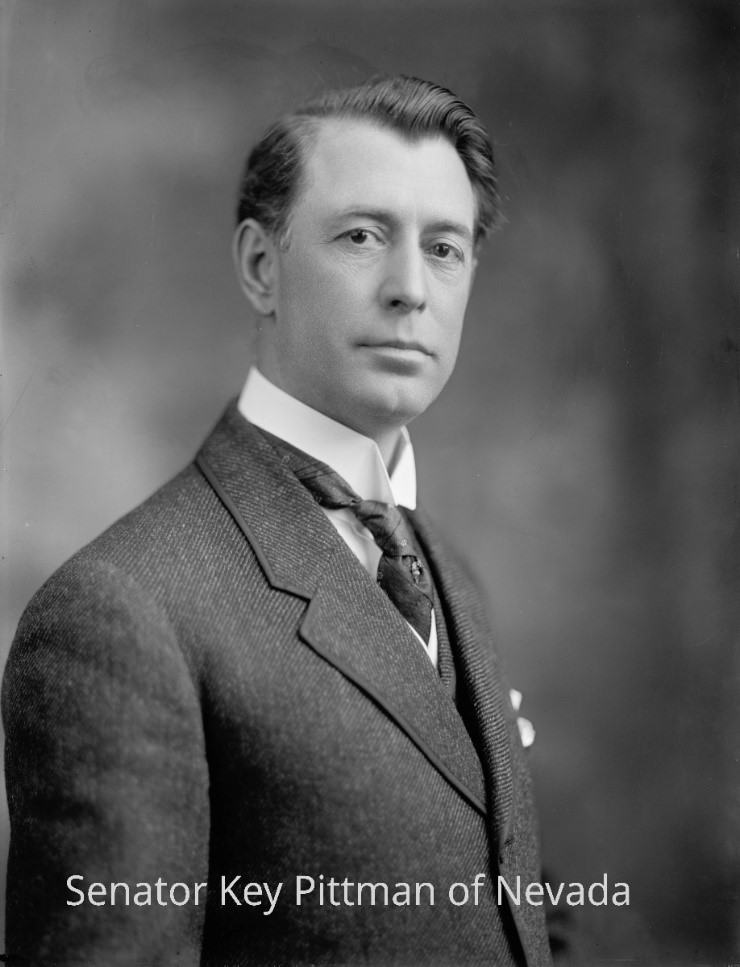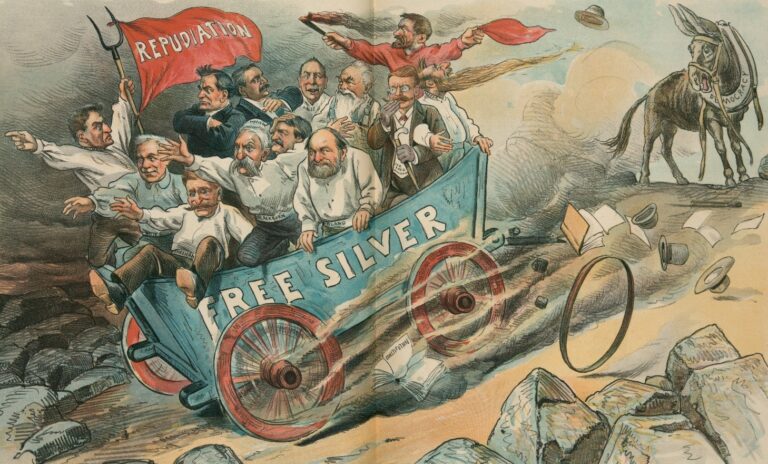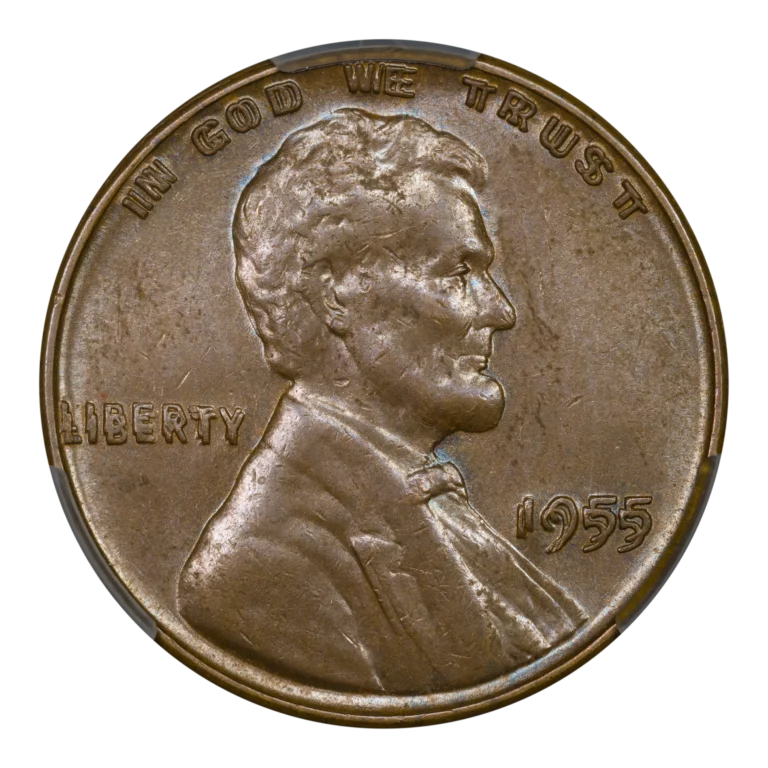by Greg Reynolds
Introduction to Proof Strikes
Background information about half dimes, guides to assembling type sets of business strikes, and discussions of collecting ‘by date’ are put forth in other parts of this series about half dimes. The topic here is collecting Proof half dimes ‘by design type.’ Of the nine types of half dimes, Proofs exist for only six of them.
This discussion is proceeding with the assumption that those interested have some understanding of the meaning of a Proof in the context of rare coins. This discussion is not aimed at experts. Indeed, it is introductory in nature.
Besides, there is no precise, universally accepted definition of a Proof. There are aspects of coins that cannot be fully explained in words even by the most literate of coin experts and there will always be some legitimate disagreements among specialists in Proof coins.
In articles published elsewhere, I have explicitly listed criteria for a coin to have Proof status, and I have explained particular non-Proof Special Strikings. Please see my articles online about the unique Proof 1855-S quarter, the only known Proof 1839 quarter , the non-Proof, very Specially Struck 1794 silver dollar, and the physical characteristics of Proof coins in the context of the controversy over 1841 quarter eagles.
While not all the coins that are PCGS or NGC certified as Proofs are true Proofs, in my view, the vast majority of them are true Proofs and a debate about assigning Proof status to a coin would be outside the theme of this discussion. For present purposes, it is postulated that a coin that is PCGS or NGC certified as a Proof and then CAC approved is a true Proof.
Forming a Set of Proof Half Dimes
An objective here is to explain that a type set of Proof half dimes is a realistic objective. Another objective is to provide ideas about the values of Proof half dimes by citing recent public sales. While past prices realized and price guides are valuable tools, they should not be interpreted narrowly. It is important to take multiple factors into consideration when evaluating a specific rare coin.
In some cases where pre-1860 coins certified as Proofs, without CAC stickers, are being considered, it would be a good idea to consult a pertinent expert regarding the Proof status of individual coins. Collectors should not just seek ‘yes or no’ answers in this realm. It makes sense instead to learn a little about the Proof criteria that are satisfied and the Proof criteria that are not fulfilled in regard to specific coins. Collectors tend to learn while they are collecting.
Whenever practical, sales of CAC approved Proof half dimes are cited. A collector who feels he or she is not yet ready to collect Proofs should assemble a type set of business strike half dimes, which are less expensive and easier to find.
Current prices are tied to current certifications and market realities. The notion of a ‘Cameo’ contrast relates to current market levels for Proof coins.
Characteristics of a Proof Coin
Both PCGS and NGC designate some Proof coins as having a ‘Cameo’ contrast. On dies employed to strike Brilliant Proof coins (not Matte Proofs), design elements were treated with substances to bring about a coating on the struck elements. Consequently, design elements on many Proofs were frosted-white as they were struck, and appear or did appear to have a thick white coating.
Before this coating tones or fades, it may seem to be the color of snow. A frosted-white coating on design elements of a Proof should not be confused with ‘mint frost,’ which refers to the texture and visual effects of particular varieties of luster that are found primarily on business strikes, coins made in a regular, routine and/or ‘average’ manner.
If the white coating or off-white coating of design elements is rich and contrasts well with mirrored or otherwise very reflective adjacent fields, then the coin is said to have a “Cameo” contrast. An especially pronounced cameo contrast is designated as “Deep Cameo” by PCGS and “Ultra Cameo” by NGC. Although neither term is superior to the other, “Deep Cameo” is used more often in the coin community, so I usually employ the phrase ‘Deep Cameo’ to refer to coins with this kind of designation by PCGS or NGC.
It is indisputable that coins with ‘Cameo’ designations are often worth substantial premiums. This is partly because PCGS and NGC grant extra points for “Cameo” designations in their respective registry sets, and even more for ‘Deep Cameo’ contrasts. This policy does not make sense to me. For whatever reasons, however, many collectors, including those who are uninterested in set registries, will pay considerably more for coins with a ‘Cameo’ contrast, and still more for Proof coins with a ‘Deep Cameo’ designation. In some cases, premiums for such designations are extremely large. It is also true that adult collectors who bought or received modern Proof sets while they were kids became accustomed to ‘Cameo’ contrasts on Proof coins, and emotionally associate thick white-coatings of design elements amidst mirrorlike fields with the concept of a Proof coin.
For some Proof issues, most coins were struck with such ‘Cameo’ contrasts. For other Proof issues, few or none were struck with cameo contrasts. The characteristics of Proof coins stem in part from the procedures followed by U.S. Mint employees who prepared dies for Proof coinage, which varied over time. It is also true that the cameo contrasts of many (though not nearly all) Proofs have been or possibly can be made more stark by dipping, immersing a coin in an acidic solution, which strips layers and typically brightens the respective coin.
In my view, coins that developed toning gradually over decades have more character and historical significance than the same coins would have if they were dipped in acidic potions to be made unnaturally bright. Some coin enthusiasts, however, prefer dipped coins.
For type coins minted after 1860, collectors assembling type sets of Proofs are usually able to find coins that match their own respective tastes and preferences. So many Proofs dating after 1860 survive, type coins are easy to find. Proofs minted before 1860, especially those minted before 1856, however, are very rare.

Type #4 – Capped Bust (1829-37)
A notable number of Proof Capped Bust half dimes are around. Proofs of several dates could practically be obtained in a few years.
On January 31, 2019, the Eliasberg-Greensboro, CAC approved, ‘Proof-65 Cameo’ 1829 half dime was auctioned by Heritage for $43,200, a strong though fair price. This same coin was auctioned by Bowers & Merena in May 1996, as part of the Eliasberg Collection, for $19,800, and by ANR in July 2005 for $34,500. In addition, Heritage auctioned this Eliasberg 1829 half dime, as part of the Greensboro Collection, in January 2014 for $36,718.75.
On March 28, 2011, Stack’s-Bowers auctioned a CAC approved Proof-64 1829 half dime for $19,550. In August 2016, at an ANA Convention in Anaheim, Heritage auctioned a CAC approved, NGC certified Proof-64 1830 half dime for $30,550. I examined this 1830 and it is impressive in terms of technical merit and eye appeal.
In December 2008, Heritage auctioned a CAC approved Proof-65 1830 for $50,025. Like an 1829 half dime that was just mentioned, this coin was formerly in the Eliasberg Collection, which was the all-time greatest collection of U.S. coins. In May 1996, this 1830 half dime realized $19,800.
In sum, a true Choice or Gem Proof of this type could cost anywhere from $10,000 to $50,000, depending upon grade, eye appeal, pedigree, and CAC approval. A problematic Proof should cost less than $10,000 and a really superb coin may cost much more than $50,000. There are enough certified Proof Capped Bust half dimes around such that a buyer can be selective about obtaining one.
Type #5 – Liberty Seated, No Stars (1837-38)
Of this design type, PCGS reports eleven Proofs, NGC lists nine and CAC six. My tentative hypothesis is that fourteen or fifteen different Liberty Seated, No Stars half dimes have been certified as Proofs, five of which are CAC approved. Are all of the certified Proofs of this design type 1837 ‘Large Date’ coins?
On February 27, 2020, the firm of Kagin’s auctioned a CAC approved Proof-63 1837 ‘No Stars’ half dime for $14,400. This may have been a good deal.
In January 2017, Heritage auctioned a certified Proof-65 1837 Liberty Seated half dime for $25,850. I maintain that this is a non-Proof Special Striking rather than a Proof, but it may be true that relevant buyers and sellers find it to be a Proof. For a significant number of coins minted before 1860, there will always be legitimate differences of opinion regarding which are Proofs, non-Proof Special Strikings or business strikes.
In March 2017, Stack’s-Bowers, in association with Sotheby’s, auctioned the Pogue Family Collection, PCGS certified Proof-66 1837 half dime for $48,175. This coin was CAC approved before the auction, though the sticker was removed and CAC approval was not revealed in the catalogue.
Certified Proof 1837 Liberty Seated half dimes are available during any six year period. These are not as impressive as Proofs of other design types, on average, and are not bold Proofs overall. I suggest pursuing Proof half dimes of other types before seeking one of the Liberty Seated ‘No Stars’ type. The subtle features of Proofs of this type make them a little more difficult to interpret and understand.
Type #6 – Liberty Seated, With Stars, No Drapery (1838-40)
Proofs of the ‘With Stars, No Drapery’ type are extremely rare. PCGS and NGC have each certified five that they regard as Proofs, thus a total of ten. CAC has approved only two, both of which are dated 1840, one as 64 and the other as 65.
In January 2014, Heritage auctioned the Kaufman-Greensboro, NGC certified Proof-66 1838 ‘No Drapery’ half dime for $182,125, an auction record. In January 2008, as part of the Phil Kaufman Collection, this same coin realized slightly more than half as much as it did in 2014, $97,750. These results are very curious, as most rare U.S. coins tended to be worth more in January 2008 than they were worth in January 2014.
In October 2014, the Pittman-Gardner, PCGS certified Proof-67 1838 half dime was auctioned for $129,250. In April 2014, Heritage auctioned the O’Neal Collection 1840 half dime for $30,550, which was PCGS certified as Proof-64 and CAC approved. Apparently, the O’Neal 1840 was earlier in the Eliasberg Collection. If so, it realized $22,000 in May 1996, while it was raw and catalogued as ‘Proof-66.’
Personally, I am far from convinced that all of the pre-1841 Liberty Seated half dimes that are certified as Proofs are indeed true Proofs. I suggest that collectors learn about them. Acquiring one with a CAC sticker involves less risk than buying that one that did not pass at CAC.

Show off Your Collection in the CAC Registry!
Have CAC coins of your own? If so, check out the CAC Registry–the free online platform to track your coin inventory, showcase your coins by building public sets, and compete with like-minded collectors!
Type #7 – Liberty Seated, With Stars, With Drapery, No Arrows (1840-1859, except 1854-55)
CAC has approved 122 Proof half dimes of this type, around a third of which are dated 1859, an issue that is often considered to be a subtype of its own. While engraving, Anthony Paquet copied the design elements of the obverse though incorporated his own personal style in the resulting work. Paquet probably was not involved in the preparation of dies for earlier issues.
In some ways, Liberty Seated half dimes dated from 1856 to 1858 are subtly, though noticeably different from half dimes of this same design type that were minted from some point in 1840 until early 1853. The distinctions are hard to explain. While only one coin is required for a type set, there are many collectors of Proofs who demand three coins of this type for a type set, a pre-1853 coin, an 1857 or 1858 and an 1859. The 1858 and the 1859 are relatively inexpensive.
Proof half dimes dating from the 1840s and early 1850s tend to cost much more than those from the late 1850s. A very appealing Proof 1841 was in the Gene Gardner Collection. This 1841 was NGC certified as Proof-65 and CAC approved. This half dime has really neat orange-russet, brown-russet, tan and blue toning. This Gardner 1841 was auctioned by Heritage for $28,200 in October 2014 and for $19,200 in February 2019.
On February 23, 2020, the firm of David Lawrence sold a PCGS certified Proof-64+ 1849 half dime, which was CAC approved at the 64-level. Experts at CAC ignore the plus aspect of plus grades assigned by PCGS or NGC. This coin realized $18,500.
In September 2020, the Goldbergs auctioned a CAC approved Proof-65 1856 half dime for $8700. Curiously, Heritage auctioned the same CAC approved NGC certified Proof-66 1858 half dime three times during a period of around one year, for $3600 in June 2018, for $2880 in February 2019 and also for $2880 in June 2019. In January 2020, Legend auctioned a CAC approved, PCGS certified ‘Proof-64 Cameo’ 1858 for $2056.25.
Some collectors find the Proof half dimes of this design type to be confusing. For some collectors, it may be best to just acquire a Proof 1858 or 1857 half dime. There is not really a need to worry about the 1859 Paquet or pre-1854 issues of Type #7.
Type #8 – Liberty Seated, With Arrows (1853-55)
PCGS or NGC certified Proofs of this type are rare, though not prohibitively so. A collector with patience may certainly acquire one. The 1855 tends to be much less rare than the other two dates. CAC has approved seven Proof 1855 half dimes.
CAC has approved just four Proof 1854 half dimes. On September 17, 2017, a CAC approved Proof-64 1854 half dime with a ‘Cameo’ designation was sold by the firm of David Lawrence for $20,500. In October 2014, Heritage auctioned a CAC approved Proof-65 1855 half dime for $11,750.
A few non-CAC, certified Proof 1854 and 1855 half dimes have publicly sold for less than $9,000 each over the last nine years. A collector should consult an expert before chasing one of those.
Type #9 – Liberty Seated, Legend on Obverse (1860-73)
It is easy to find Proofs of the last design type of half dimes. As of October 7, 2020, CAC reports a population of more than 575. PCGS and NGC have probably certified more than two thousand different Proof Liberty Seated half dimes that were minted from 1860 to 1873.
On March 15, 2020, Heritage sold a CAC approved Proof-63 1864 half dime for $636. In January 2020, Heritage auctioned a CAC approved Proof-65 1863 half dime for $1200. These two coins were minted during the U.S. Civil War.
In June 2019, Heritage auctioned a CAC approved, NGC certified ‘Proof-66 Cameo’ 1865 for $2220. In May 2019, Heritage sold a CAC approved, PCGS certified Proof-64 1866 half dime for $720, a modest price in the grand scheme of 19th century Proof coins.
On December 13, 2018, Heritage auctioned a CAC approved Proof-64 1867 half dime with a ‘Cameo’ designation for $840. On September 8, 2019, Heritage sold a CAC approved Proof-65 1868 half dime for $990. On August 7, 2020, Stack’s-Bowers auctioned a CAC approved Proof-66 1869 half dime for $1320.
On March 28, 2019, Kagin’s auctioned a CAC approved Proof-65 1872 half dime for $1320. On December 30, 2018, the firm of David Lawrence auctioned a CAC approved PCGS certified Proof-66 1873 half dime for $1475. There are plenty of gems of this type from which to choose.
Concluding Remarks
After deciding to assemble a type set of Proof half dimes, it might be a good idea to acquire a few of the last type and learn about Proof half dimes before pursuing some of the rarer and more expensive earlier coins. For collectors who have patience and ample funds, a type set of Proof half dimes would be a practical and exciting quest.
Alternately, a collector could focus only on the last type (#9), with the legend on the obverse, and collect those Proofs ‘by date.’ A complete set of Proof half dimes from 1860 to 1873 would be inexpensive in the framework of Proof 19th century coins. Such a set would be very cool.
Copyright © 2020 Greg Reynolds
About the Author
Greg is a professional numismatist and researcher, having written more than 775 articles published in ten different publications relating to coins, patterns, and medals. He has won awards for analyses, interpretation of rarity, historical research, and critiques. In 2002 and again in 2023, Reynolds was the sole winner of the Numismatic Literary Guild (NLG) award for “Best All-Around Portfolio”.
Greg has carefully examined thousands of truly rare and conditionally rare classic U.S. coins, including a majority of the most famous rarities. He is also an expert in British coins. He is available for private consultations.
Email: Insightful10@gmail.com
